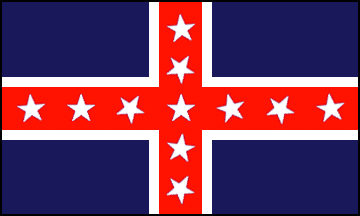Overview of the Federated Kingdoms
North America
Canada
Canada refers to the northern portion of Federate North America. Most of its settlements are situated along the St. Lawrence river, and the climate gets progressively harsher as one travels further north and west. The ladscape is full of hills in the east, slowly turning into a plain as one travels further to the west, and eventually ending with the tall Rocky Mountains.
There is little industry here, and all of it is centered on the St. Lawrence river. People mostly focus on fur trapping, fishing, ship building. Many independant farmers make a living out in the west by cultivating a number of crops. Canadian lumber is used in many Federate industries.
Canada has a population of 3,229,600, equal to 1.3% of the Federate population.
In the political realm the country is split between the Conservative and Liberal parties, both advocating state intervention in economy, but with liberals favoring free trade while the conservatives try to push a protectionist agenda.
Hudsonia
Temperate forestland and rolling hills dominate the landscape of this country. It is very densely populated with many cities that have sprung up since the colonial period. The Appalachian mountains form the western boundary of the country while the Atlantic forms the eastern.
Economically this is the second most industrialized area in the Federated Kingdoms, second only to the UK. The rich deposits of coal in the Appalachians drove early industrialization and now this region is dotted with plants and factories, and many major cities are the world's foremost industrial centers.
Due to the density of the population it reached 11,457,000 or 4.7% of the Federate population.
The liberal Republican and the conservative Democratic parties dominate the politics here, with the Republicans calling for laissez faire economics and protectionist measures while the Democrats favor intervention and free trade. A small Constitutional Union party is very conservative, but some of their measures resemble those of the Republicans.
Carolina
A large portion of Carolina's territory is on the sea coast, and with level and sandy ground. The interior portions were hilly and mountainous. Most of the area of Carolina has a humid subtropical climate with mild winters and long, hot, humid summers.
Carolina has an agrarian-based economy that relied heavily on plantations. The main products are cotton, rice, tobacco and sugar cane, with some cattle and much grain. Industry is starting to take hold in some of the major cities and the main producsts are flour and meal, lumber, processed tobacco, cotton goods and naval stores.
The population here is 6,389,000, equaling 2.6% of the total Federate population.
Politically, the anarcho-liberal Democratic party that favors free trade and laissez faire economics dominates. The conservatie opposition is made up of mostly older politicians that chose to adopt the name Whigs, but even they don't favor intervention.
Western Territories
Everything roughly west of the Appalachians and south of the Great Lakes is what is known as "western territories. The geography here ranges from a huge, dry plain in the center, to the Rocky Mountains, to hills and forests of the Mississippi and to the tall evergreen forests of the Oregon.
Traditionally this land has been seen as rural and unorganized, but more recently many cities have sprung up, especially along the Mississippi, focusing mostly on commerce and agrarian production. Raw materials from the North are shipped down the river to the South and many agricultural goods also find their way in the delta of the Mississippi.
Population-wise there are 9,821,000 people living here, aproximately 4% of the Federated Kingdom's total.
There is no political organization, and debate is ongoing about what to do with the territories as they become more developed.






